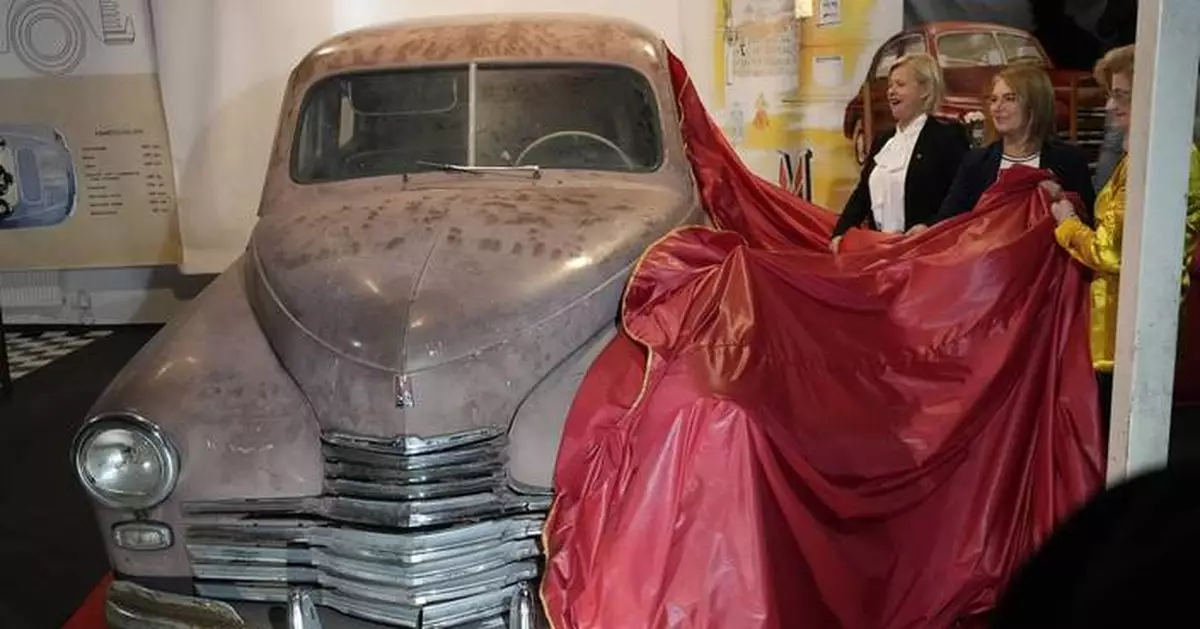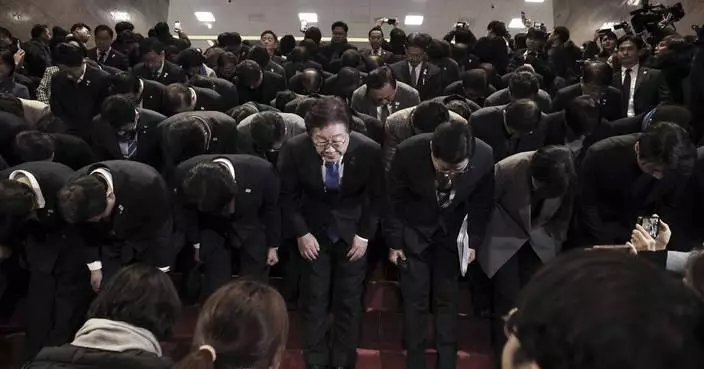OTREBUSY, Poland (AP) — The very first car produced in Soviet-era Poland after World War II went on display Friday near Warsaw after it was tracked down in Finland during decades of searching and acquired after years of negotiations.
The chunky 1951 Warszawa M-20 bears the serial number 000001 it had when it left the FSO Passenger Car Factory in Warsaw on Nov. 6 of that year, exactly 73 years ago. It is a relic of the period of Poland’s post-war subordination to communist-ruled Soviet Union.
Click to Gallery
The 000001 VIN number and technical details of the Warszawa M-20 car, based on a Soviet Union's model, that was the first vehicle to leave a car factory in Poland after World War II, on Nov. 6, 1951 . Now, 73 years later, it went on public display at a private museum in Otrebusy, central Poland, on Wednesday, Nov. 6, 2024. (AP Photo/Czarek Sokolowski)
This Warszawa M-20 car with serial number 000001, based on a Soviet Union's model, was the first vehicle to leave a car factory in Poland after World War II, on Nov. 6, 1951 and now, 73 years later, it goes on public display at a private museum in Otrebusy, central Poland, on Wednesday, Nov. 6, 2024. (AP Photo/Czarek Sokolowski)
This Warszawa M-20 car with serial number 000001, based on a Soviet Union's model, was the first vehicle to leave a car factory in Poland after World War II, on Nov. 6, 1951 and now, 73 years later, it goes on public display at a private museum in Otrebusy, central Poland, on Wednesday, Nov. 6, 2024. (AP Photo/Czarek Sokolowski)
This Warszawa M-20 car with serial number 000001, based on a Soviet Union's model, was the first vehicle to leave a car factory in Poland after World War II, on Nov. 6, 1951 and now, 73 years later, it goes on public display at a private museum in Otrebusy, central Poland, on Wednesday, Nov. 6, 2024. (AP Photo/Czarek Sokolowski)
This Warszawa M-20 car with serial number 000001, based on a Soviet Union's model, was the first vehicle to leave a car factory in Poland after World War II, on Nov. 6, 1951 and now, 73 years later, it goes on public display at a private museum in Otrebusy, central Poland, on Wednesday, Nov. 6, 2024. (AP Photo/Czarek Sokolowski)
This Warszawa M-20 car with serial number 000001, based on a Soviet Union's model, was the first vehicle to leave a car factory in Poland after World War II, on Nov. 6, 1951 and now, 73 years later, it goes on public display at a private museum in Otrebusy, central Poland, on Wednesday, Nov. 6, 2024. (AP Photo/Czarek Sokolowski)
This Warszawa M-20 car with serial number 000001, based on a Soviet Union's model, was the first vehicle to leave a car factory in Poland after World War II, on Nov. 6, 1951 and now, 73 years later, it goes on public display at a private museum in Otrebusy, central Poland, on Wednesday, Nov. 6, 2024. (AP Photo/Czarek Sokolowski)
The 000001 VIN number and technical details of the Warszawa M-20 car, based on a Soviet Union's model, that was the first vehicle to leave a car factory in Poland after World War II, on Nov. 6, 1951 . Now, 73 years later, it went on public display at a private museum in Otrebusy, central Poland, on Wednesday, Nov. 6, 2024. (AP Photo/Czarek Sokolowski)
This Warszawa M-20 car with serial number 000001, based on a Soviet Union's model, was the first vehicle to leave a car factory in Poland after World War II, on Nov. 6, 1951 and now, 73 years later, it goes on public display at a private museum in Otrebusy, central Poland, on Wednesday, Nov. 6, 2024. (AP Photo/Czarek Sokolowski)
This Warszawa M-20 car with serial number 000001, based on a Soviet Union's model, was the first vehicle to leave a car factory in Poland after World War II, on Nov. 6, 1951 and now, 73 years later, it goes on public display at a private museum in Otrebusy, central Poland, on Wednesday, Nov. 6, 2024. (AP Photo/Czarek Sokolowski)
This Warszawa M-20 car with serial number 000001, based on a Soviet Union's model, was the first vehicle to leave a car factory in Poland after World War II, on Nov. 6, 1951 and now, 73 years later, it goes on public display at a private museum in Otrebusy, central Poland, on Wednesday, Nov. 6, 2024. (AP Photo/Czarek Sokolowski)
This Warszawa M-20 car with serial number 000001, based on a Soviet Union's model, was the first vehicle to leave a car factory in Poland after World War II, on Nov. 6, 1951 and now, 73 years later, it goes on public display at a private museum in Otrebusy, central Poland, on Wednesday, Nov. 6, 2024. (AP Photo/Czarek Sokolowski)
This Warszawa M-20 car with serial number 000001, based on a Soviet Union's model, was the first vehicle to leave a car factory in Poland after World War II, on Nov. 6, 1951 and now, 73 years later, it goes on public display at a private museum in Otrebusy, central Poland, on Wednesday, Nov. 6, 2024. (AP Photo/Czarek Sokolowski)
This Warszawa M-20 car with serial number 000001, based on a Soviet Union's model, was the first vehicle to leave a car factory in Poland after World War II, on Nov. 6, 1951 and now, 73 years later, it goes on public display at a private museum in Otrebusy, central Poland, on Wednesday, Nov. 6, 2024. (AP Photo/Czarek Sokolowski)
“We are extremely proud because now we count among the very few people in the world who have retrieved the very first vehicles of the series made in their countries,” said Zbigniew Mikiciuk, a co-founder of the private museum in Otrebusy.
The car was first given to the Soviet army marshal Konstantin Rokossovsky, who served as Poland’s defense minister after the war to seal the country’s dependency to Moscow. It eventually was discovered in the possession of the family of Finnish rally car driver Rauno Aaltonen, though the car's history in between remains unclear, Mikiciuk said.
It took more than two years of negotiations to obtain the vehicle from the Finnish owners, he said.
The car's original light color has been painted over with a shade of brown that was fashionable in the 1970s and bears marks of once-intensive use that the museum has preserved to keep it authentic, but it is still "holding together”and is “cool” despite its age, Mikiciuk said.
The now-defunct FSO factory intensively sought the original model during the 1970s in hopes of using it to mark an anniversary. The company even offered a new car in exchange for it, at a time when cars were still a luxury in Poland, but to no avail.
The FSO factory was originally built in the late 1940s to make Italian Fiat 508 and 1100 cars, but Soviet leaders in Moscow objected to the ties with a Western company during the Cold War. They ordered production to be based on the Soviet Union's Pobeda (Victory) cars, with Moscow providing the technology and the production lines.
The car now joins the museum’s many historic vehicles, including a 1928 U.S.-made Oakland brought to Poland before the war by a doctor’s family and a 1953 Buick that belonged to Poland’s communist-era Prime Minister Jozef Cyrankiewicz. The former leader brought the car to Poland via the Netherlands apparently to avoid a direct connection to the U.S. during the Cold War.
The museum also displays a Volvo that was used by Poland’s communist leader, Gen. Wojciech Jaruzelski, known for having imposed martial law in 1981.
“We have been doing this for more than 50 years and we are not collecting cars you can see in the street but cars that have their history, their soul and their legend,” Mikiciuk said.
The museum owners hope that by displaying the initial Warszawa M-20 they can encourage members of the public to come forward and fill in more details of its history.
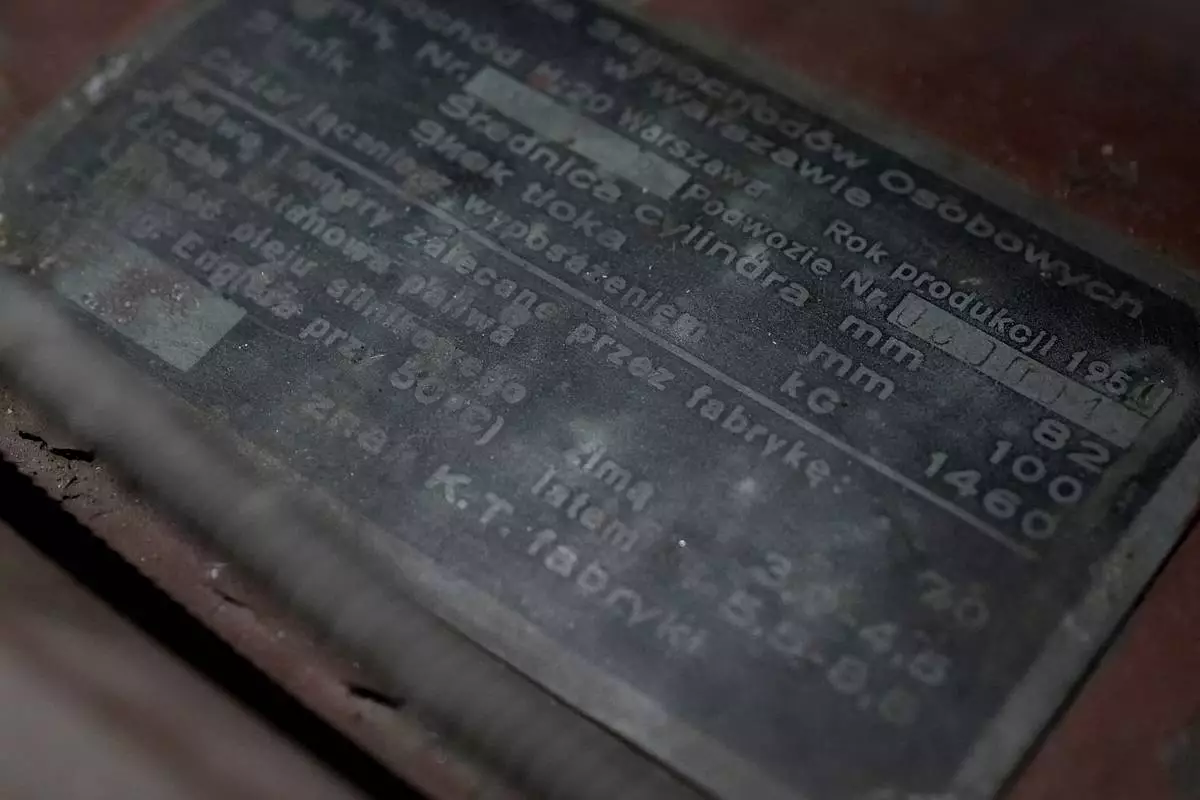
The 000001 VIN number and technical details of the Warszawa M-20 car, based on a Soviet Union's model, that was the first vehicle to leave a car factory in Poland after World War II, on Nov. 6, 1951 . Now, 73 years later, it went on public display at a private museum in Otrebusy, central Poland, on Wednesday, Nov. 6, 2024. (AP Photo/Czarek Sokolowski)
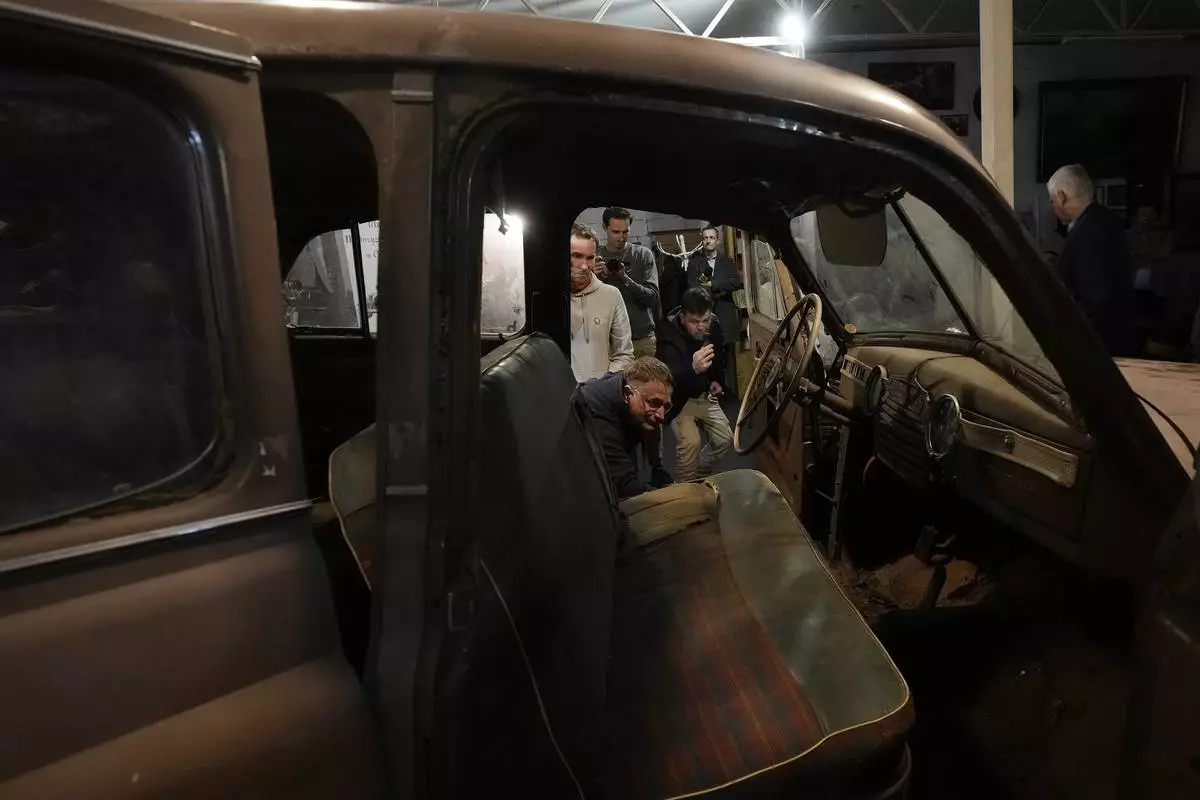
This Warszawa M-20 car with serial number 000001, based on a Soviet Union's model, was the first vehicle to leave a car factory in Poland after World War II, on Nov. 6, 1951 and now, 73 years later, it goes on public display at a private museum in Otrebusy, central Poland, on Wednesday, Nov. 6, 2024. (AP Photo/Czarek Sokolowski)
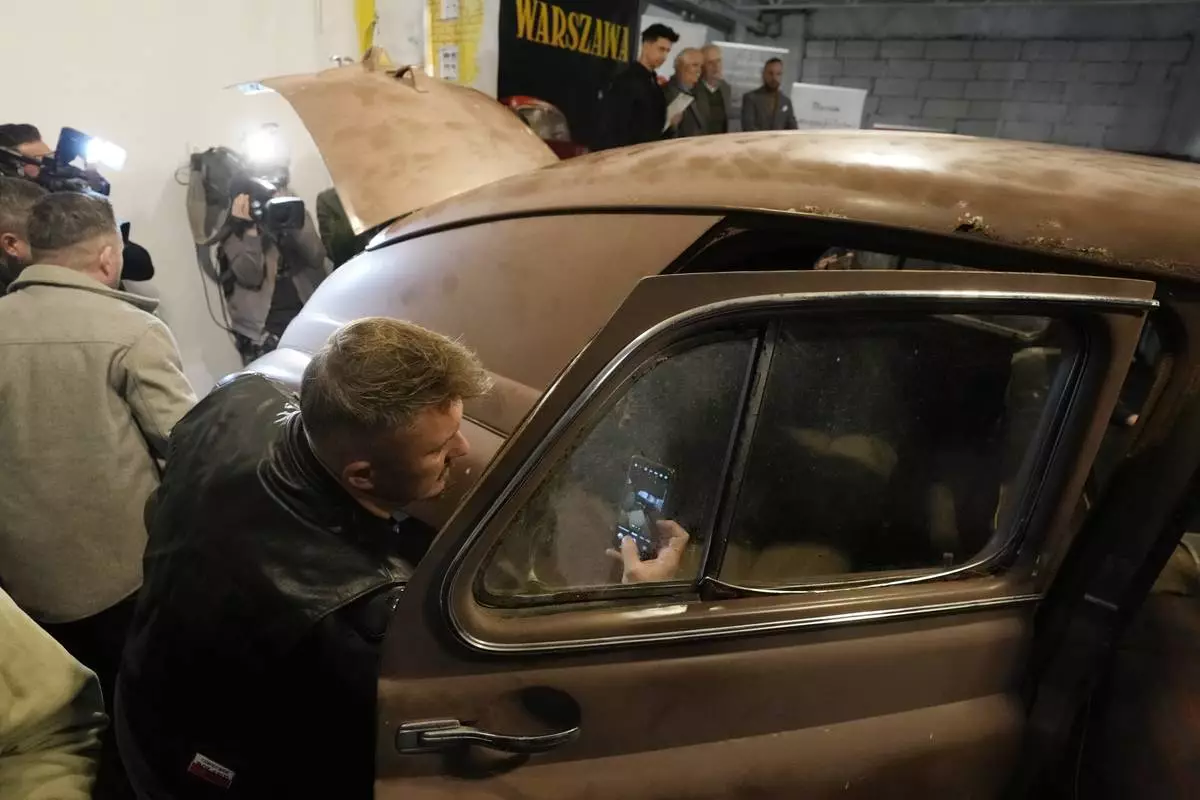
This Warszawa M-20 car with serial number 000001, based on a Soviet Union's model, was the first vehicle to leave a car factory in Poland after World War II, on Nov. 6, 1951 and now, 73 years later, it goes on public display at a private museum in Otrebusy, central Poland, on Wednesday, Nov. 6, 2024. (AP Photo/Czarek Sokolowski)
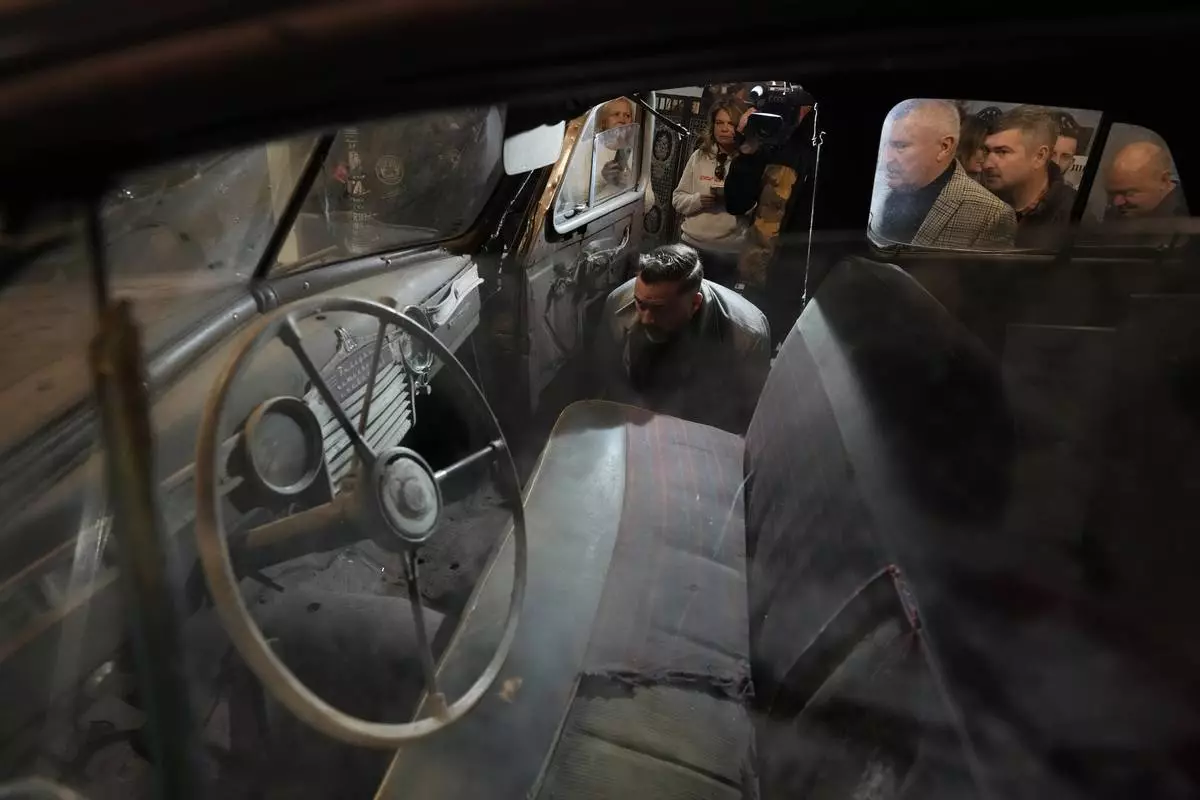
This Warszawa M-20 car with serial number 000001, based on a Soviet Union's model, was the first vehicle to leave a car factory in Poland after World War II, on Nov. 6, 1951 and now, 73 years later, it goes on public display at a private museum in Otrebusy, central Poland, on Wednesday, Nov. 6, 2024. (AP Photo/Czarek Sokolowski)
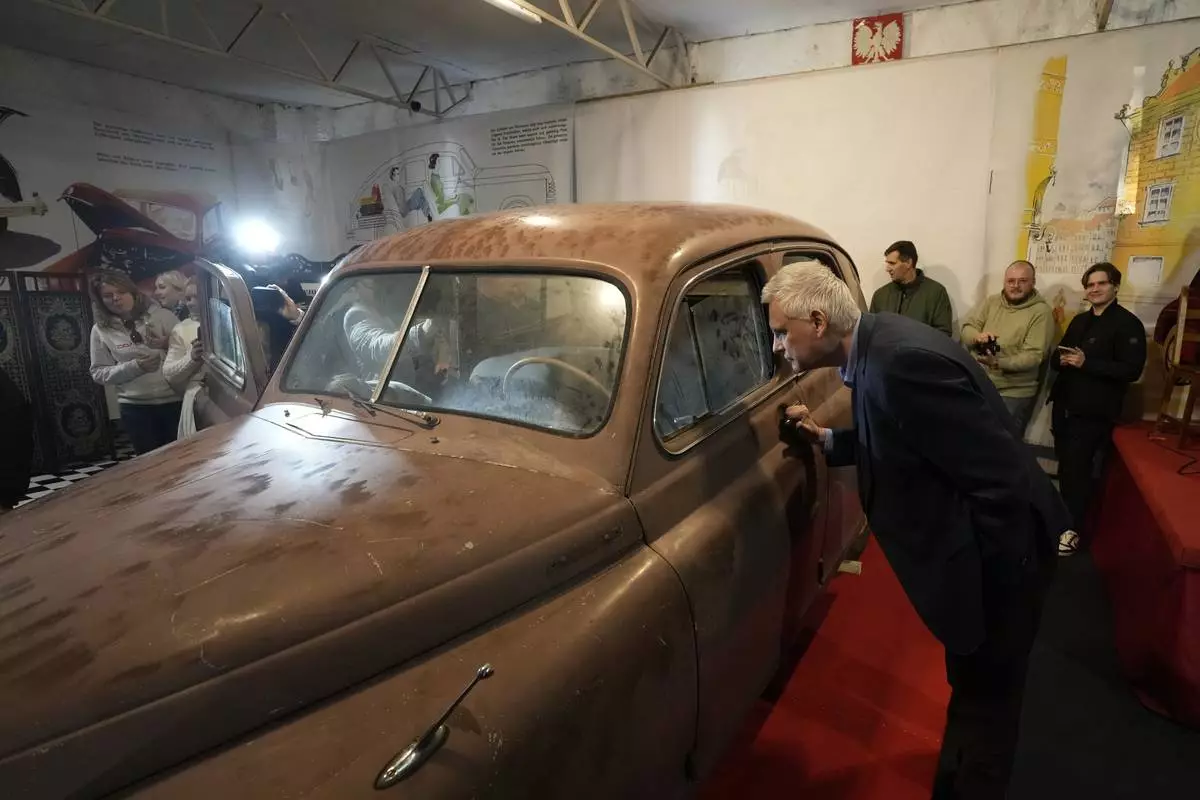
This Warszawa M-20 car with serial number 000001, based on a Soviet Union's model, was the first vehicle to leave a car factory in Poland after World War II, on Nov. 6, 1951 and now, 73 years later, it goes on public display at a private museum in Otrebusy, central Poland, on Wednesday, Nov. 6, 2024. (AP Photo/Czarek Sokolowski)
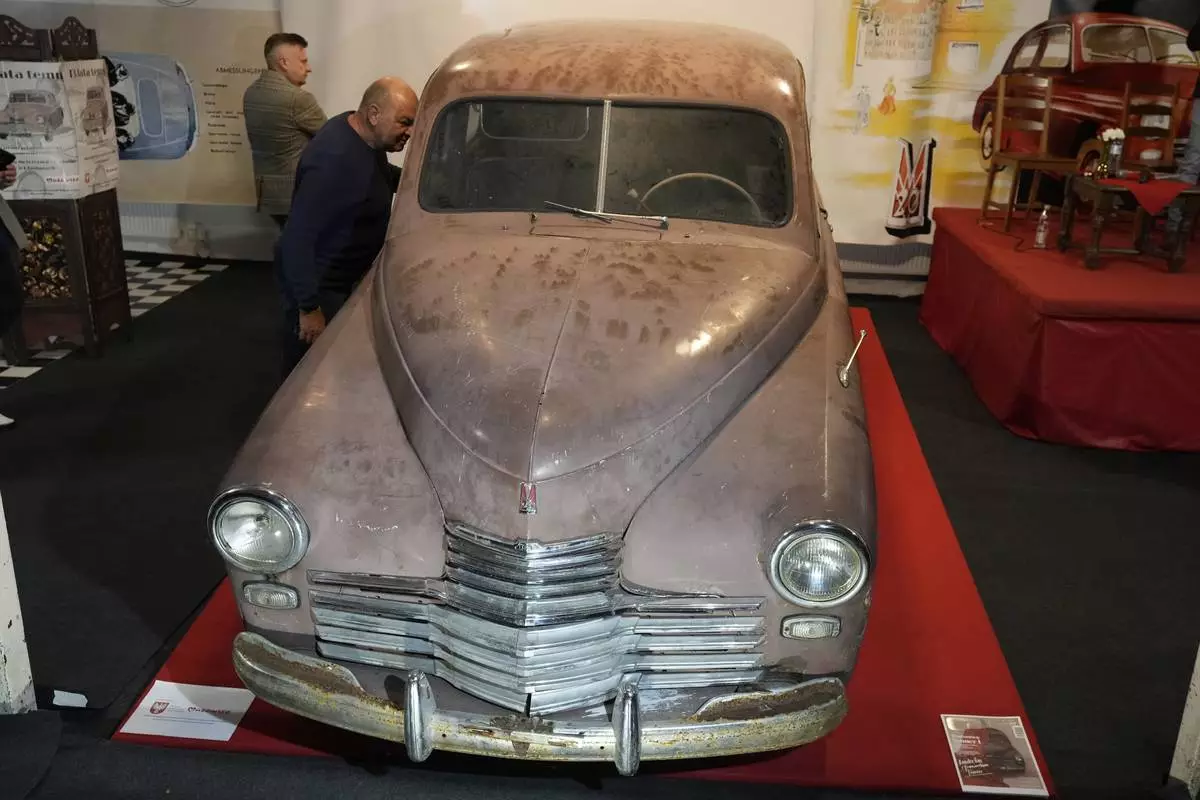
This Warszawa M-20 car with serial number 000001, based on a Soviet Union's model, was the first vehicle to leave a car factory in Poland after World War II, on Nov. 6, 1951 and now, 73 years later, it goes on public display at a private museum in Otrebusy, central Poland, on Wednesday, Nov. 6, 2024. (AP Photo/Czarek Sokolowski)
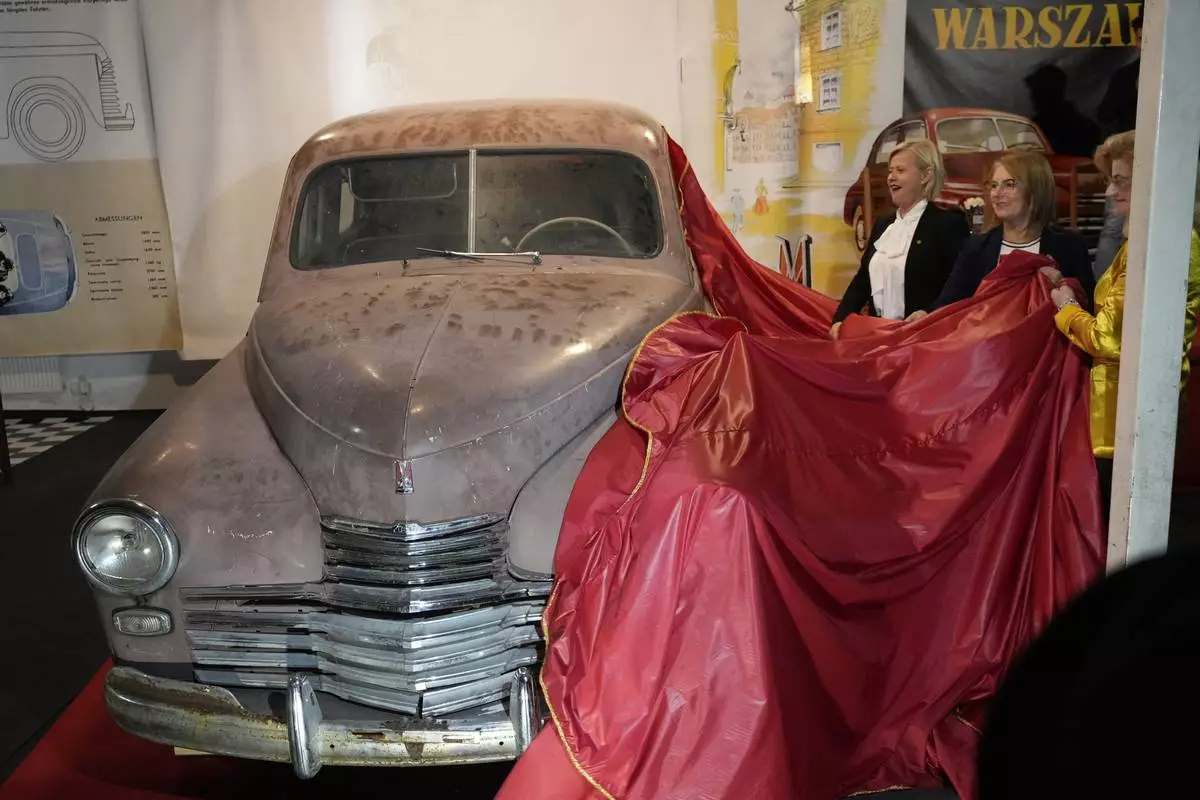
This Warszawa M-20 car with serial number 000001, based on a Soviet Union's model, was the first vehicle to leave a car factory in Poland after World War II, on Nov. 6, 1951 and now, 73 years later, it goes on public display at a private museum in Otrebusy, central Poland, on Wednesday, Nov. 6, 2024. (AP Photo/Czarek Sokolowski)
GENEVA (AP) — A red fox frantically scratches the wires of its small cage. An Arctic fox meanders lazily with a bloody tail. Other furry creatures, some with teary eyes, stare blankly into a light on an activist's video camera.
Finnish advocacy group Oikeutta Elaimille, or Justice for Animals, and Humane Society International have released images taken from an “undercover investigation” at three fur farms in western Finland in late October to highlight the behind-the-scenes realities of the trade.
The activists’ incursion came as the European Union, which counts Finland as a member, is awaiting advice in March from the EU agency that oversees animal welfare before deciding in March 2026 whether it should propose a ban on fur farming altogether.
FIFUR, a Finnish fur-breeders group, blasted the “covert filming” of the farms, accusing the intruders of “breaching strict biosecurity requirements” on farms where operations are “strictly controlled by national laws and regulations” and where veterinarians monitor animal welfare.
Some viewers might ache over the conditions of the cuddly-looking creatures; others might wonder what the big deal is: The industry is — at least for now — legal and regulated.
Aside from the animals’ captivity in small cages — with sometimes more than one in a single cage — none of the images shows abuse in progress. No explanation was given for the bright red blood on what looked like an open gash and exposed bone in a single Arctic fox’s tail area.
“These pictures and these intrusions ... it creates a false image of normal lab animal welfare and animal keeping in the farms," said FIFUR spokesman Olli-Pekka Nissinen, adding that his group believed the initiative to ban fur farming will be rejected.
The breeders' group said the fur sector has among the highest welfare standards of any form of animal husbandry, and Nissinen suggested that farmers have little incentive to mistreat them. "Animal welfare first shows in the animals’ fur and it’s very important for farmers to take care of the animals so that they can have decent incomes.”
FIFUR says most of its 442 member farms — as of December last year — are run by family businesses, and nearly all the farms are in the Ostrobothnia region along the Baltic Sea. Finland is the world's largest producer of certified fox pelts, the industry group said.
Oikeutta Eläimille spokesman Kristo Muurimaa says the operation involved entering the farms to observe and document the conditions in which the animals are kept and that the photos were taken in compliance with Finnish law.
Neither side has announced plans for any legal action.
“Fur has been used by people for a long time, since the Stone Ages basically," Muurimaa said. “However, a practice where animals are kept in very small barren cages is not that old. It is a product of modern times where animals are seen just as products.”
“This kind of treatment of animals doesn’t belong to this day. Times have moved on and now it’s time to leave this kind of cruelty behind,” he added. “Nobody needs fur in modern times. Fur is mostly used as a status symbol by the rich elite in countries like China and Russia.”
The 27-country EU, according to its most recent figures, estimates about 1,000 fur farms with roughly 7.7 million animals — including mink, fox and raccoon dogs — are active in the bloc.
In neighboring Switzerland, which is not an EU member, a three-month public consultation ended last month on a government proposal to ban the import and sale of furs drawn from the “mistreatment” of animals. The measure would allow authorities to seize such furs.
Activists want the Swiss government to go further, seeking a broader definition of “mistreatment” and wider range of fur farms affected. The issue, currently low on Switzerland's full referendum calendar, could be put to a public vote in late 2026 at the earliest.
Humane Society International, in a statement last month, said tens of millions of animals suffer and die each year in the global fur trade and the “vast majority of animals killed for their fur are kept in barren battery cages on fur farms.”
Finland, the advocacy group said, is one of the last European countries where farming such animals for their fur remains legal — and finger-pointed a number of retail brands that use fox fur from Finland.
China is the world's most important export market for furs, followed by South Korea and the Western Europe-North American market, said FIFUR, which counts hundreds of farms in Finland as members.
In Europe, as of 2023, Poland and Greece were the biggest producers — almost entirely from mink — while Finland is third, according to a report by the industry association this year.
Bird flu and coronavirus outbreaks hit the fur industry hard, notably in Denmark, since 2020, but the trend line in supply has been declining for many years.
FIFUR's report showed supply volumes of mink pelts plunged by roughly three-quarters since 2010 — to 12,285 last year — a similar percentage decline to that for mink pelts, which totaled 2,440 in 2023.

This photo provided by Humany Society International shows foxes inside a cage at a fur farm in western Finland, in late October 2024. (Humany Society International/Oikeutta Elaimille via AP)
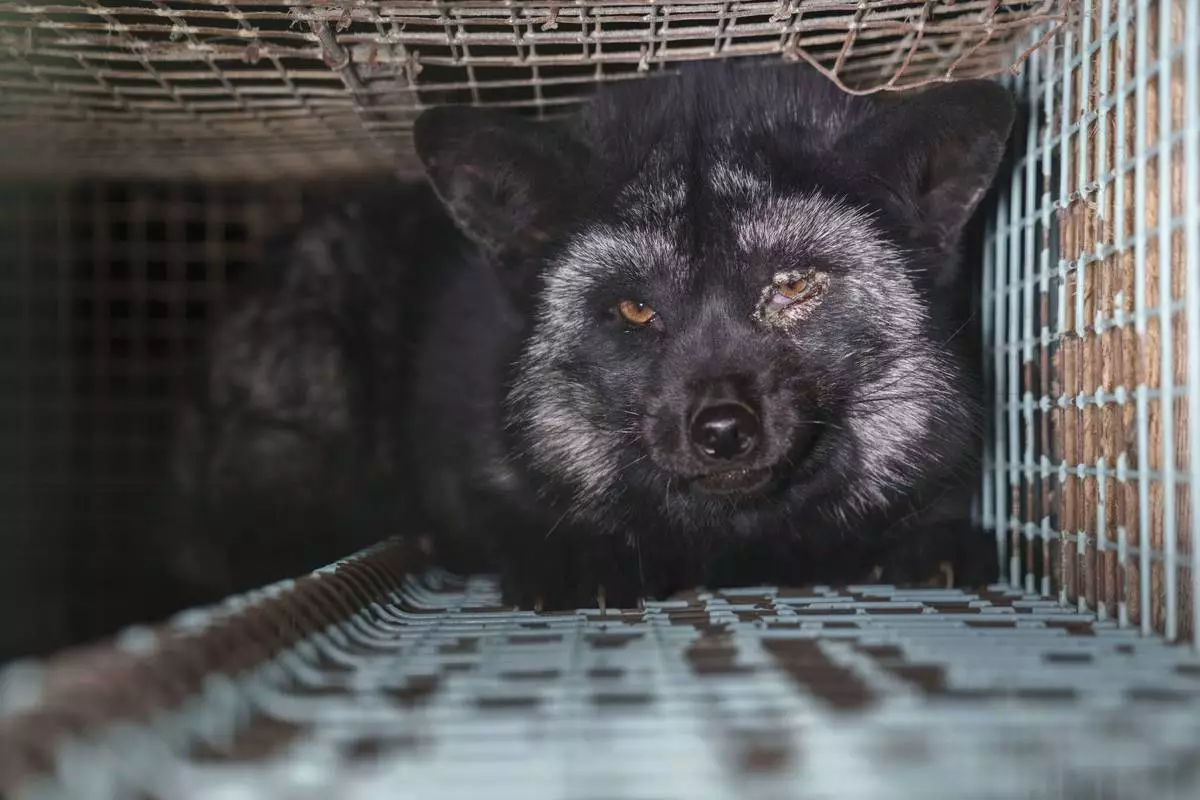
This photo provided by Humany Society International shows a fox inside a cage at a fur farm in western Finland, in late October 2024. (Humany Society International/Oikeutta Elaimille via AP)

This photo provided by Humany Society International shows a fox inside a cage at a fur farm in western Finland, in late October 2024. (Humany Society International/Oikeutta Elaimille via AP)

This photo provided by Humany Society International shows foxes inside a cage at a fur farm in western Finland, in late October, 2024. (Humany Society International/Oikeutta Elaimille via AP)
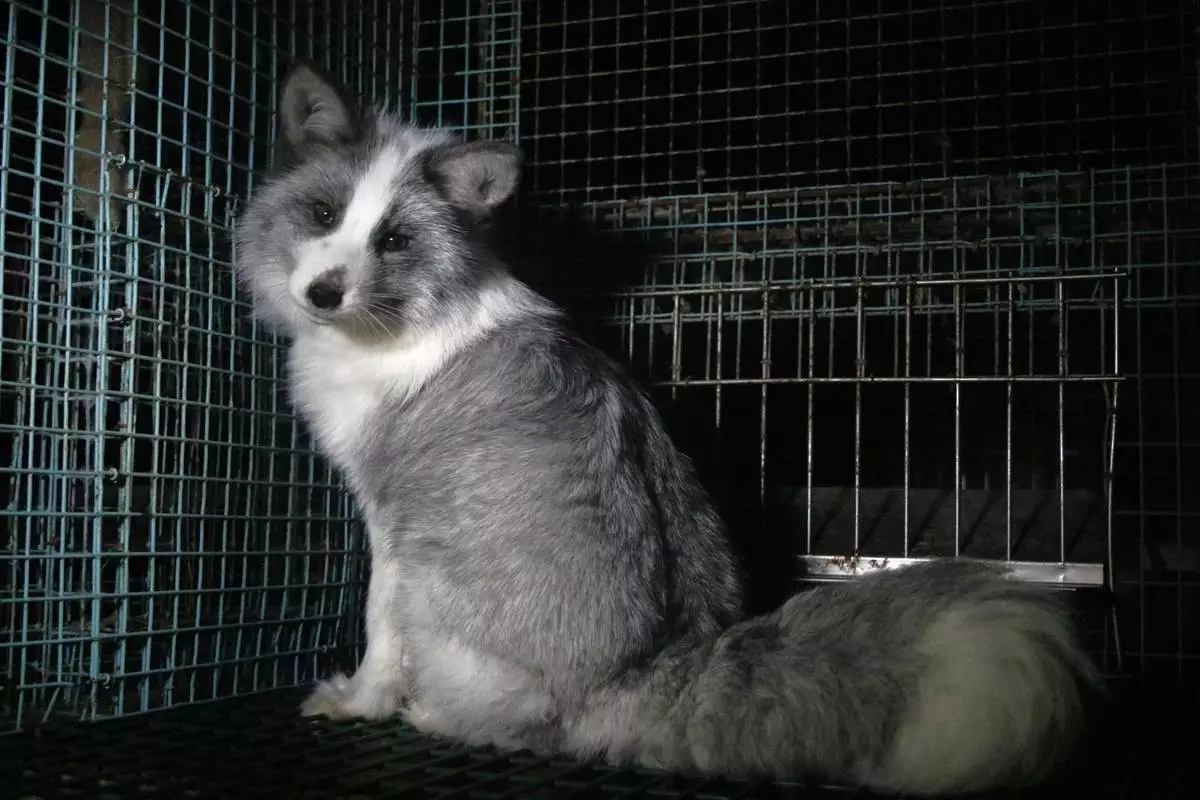
This photo provided by Humany Society International shows a fox inside a cage at a fur farm in western Finland, in late October, 2024. (Humany Society International/Oikeutta Elaimille via AP)









